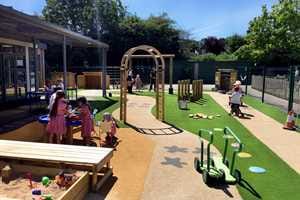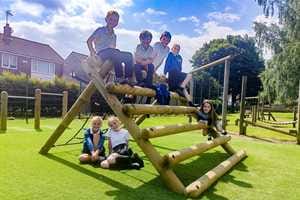
Lesson Ideas and Activities
Nurturing EYFS Children's Creativity
Discover the importance of nurturing and encouraging creativity in early childhood development, and find activities that encourage problem-solving skills and imagination.
Children’s creativity is a vibrant and essential part of their early childhood development. It’s not just about artistic and musical expression; it extends to all areas of life, including science, math, and social interactions. Creativity in children is often seen as an innate talent, but it’s more accurately a skill that can be nurtured and developed.
In recent times, a lot of schools have started to incorporate creative play into their school playground routine, which is no surprise! But, what is creative play and how does it improve child development in different areas?
What Is Creative Play?
Creative play is when a child will use familiar materials in a new way, improving their creative thinking skills. Creative play can also occur when children engage in activities like imaginative play and role-playing.
Children develop understanding about the world around them by engaging with the world, and creative play is the best way to engage with the environment around them.
.jpg)
A great example is learning to draw a shape. A child can only learn how to draw a square by drawing a square. The child not only learns about basic maths, but starts to understand how a pencil and paper engage with each other.
This simple act of creative play and learning helps the child open doors to other areas of learning, whilst staying 100% engaged.
How Can Children Be Creative?
A child can only be creative when their imagination and creativity are enhanced by the environment and the other children around them.
By creating an environment which promotes creative thinking skills, you can be assured that your pupils will start being naturally creative and approaching topics in a more engaged way. Most schools usually create a creative play area, making certain that children are surrounded by environment that encourages creative thinking.
.jpg)
There's a wide variety of different ways that children engage in creative play and it's important that all teachers know the examples of how children may display their creativity.
Examples Of Children Being Creative
- Imaginative & Pretend Play: When children engage in role-playing games, they create complex narratives and characters, often drawing from their own experiences or stories they’ve heard and therefore developing children’s imagination and leading to social development. The importance of a creative role-play area cannot be overstated.
- Artistic Exploration: Through drawing, painting, or crafting, children express their thoughts and emotions, experimenting with colours and shapes to create something unique, which will help them develop basic skills.
- Problem-Solving Skills: Creativity is not limited to the arts. When children play with building blocks or solve puzzles, they are using creative thinking to overcome challenges and aid child development.
- Storytelling: Whether it’s recounting a day at the park or inventing a fairy tale, children use storytelling as a way to understand and communicate their experiences.
Creativity is crucial for young children as it fosters mental growth by providing opportunities for trying out new ideas, ways of thinking, and problem-solving skills. It allows children to express themselves and build confidence in their abilities which encourages children's development.
Whether it's pretend play or storytelling activities, creative play is a fantastic way to develop basic skills within children and help them grow into well-rounded adults.
The Value Of Creativity In Children
Creativity is indeed a fundamental skill for children, playing a crucial role in early childhood development. Not only does it develop a wide variety of skills, but it keeps the brain stimulated.
As the brain constantly develops, children will always seek a new form of stimulant. With creative play providing numerous different engaging activities, children often love creative play and see it as a chance to provide their brain with new and interesting information.
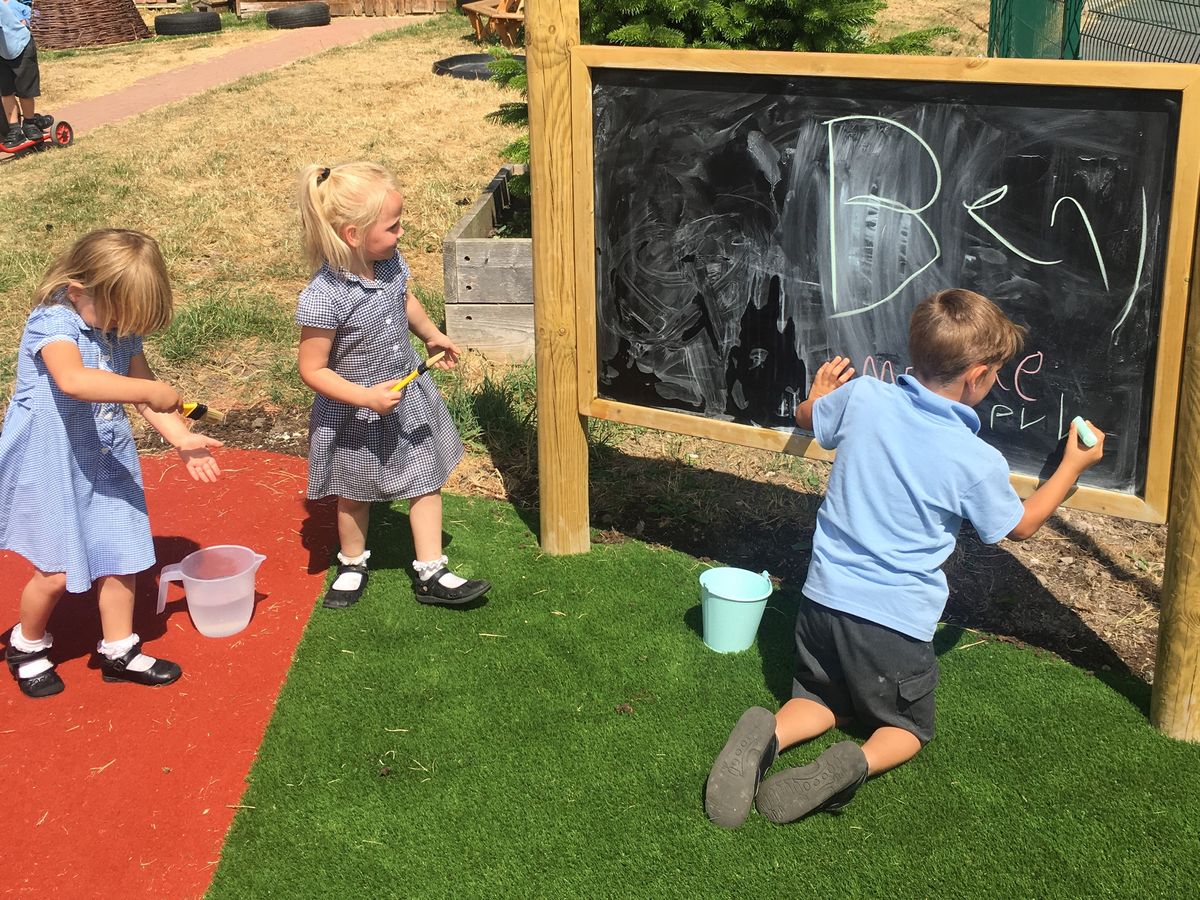
Here’s why it’s so important:
- Cognitive Skills: Creativity encourages young children to explore and experiment, leading to new ways of thinking and problem-solving. It helps them understand the world around them and fosters intellectual growth.
- Emotional Growth: Through creative activities, children can express their feelings and work through emotions. This self-expression is vital for emotional health and can nurture resilience and confidence.
- Social Development: When children engage in creative play, specifically pretend play, they often do so with others, which helps them develop social skills like sharing, negotiating, and collaborating.
- Early Physical Development: Many forms of creativity, such as drawing or dancing, also involve gross and fine motor skills, which are essential for early years physical development.
- Innovation and Adaptability: In a rapidly changing world, the ability to think creatively is increasingly important. It allows young children to adapt to new situations and come up with innovative solutions to challenges, hence the importance of creative development.
- Lifelong Learning: Creativity installs a love for learning and a curiosity that can last a lifetime. It encourages children to continue exploring and learning new things from their early years into their adulthood.
In summary, creativity is not just about artistic expression; it’s a multifaceted skill that impacts many areas of a child’s development, whilst keeping the child satisfied as the brain constantly develops and seeks new knowledge. This is why creative play is one of the seven areas of learning and development taught during EYFS.
Creative play help children by preparing them for a future where they can thrive in various aspects of life.
Encouraging creativity in early childhood sets the foundation for continuous growth and development across all stages of life.
Why Adults Should Nurture Creativity
Nurturing a child's creativity is vital for helping them develop basic skills, offering a multitude of benefits that extend well into adulthood. Here are some key reasons why adults should actively facilitate this development:
- Economic Success: Research indicates that early years creativity is a predictor of economic success in later life. Young children who exhibit creativity tend to achieve higher career earnings and secure better-quality jobs.
- Educational Attainment: Creativity in childhood also correlates with higher levels of educational attainment, equipping young children with the skills to excel in academic and professional settings.
- Cognitive Skills: Creative activities support mental growth by challenging young children with elements like equality, balance, spatial relationships, fine motor skills and problem-solving. All these aspects contribute towards the intellectual development of the child.
- Communication Skills: Through creative play activities, like pretend play or storytelling, and expression, young children learn to relate to others, tell stories, and stay emotionally grounded, which are important social skills, communication skills & social interaction skills for child development.
Adults play a crucial role in facilitating children’s creative development by:
- Providing Resources: Offering a variety of materials, objects and experiences encourages child development by helping children to explore and express their creativity. Certain materials and resources can also help with early physical development.
- Encouraging Curiosity: Stimulating a child’s curiosity and openness to new experiences can foster a more creative mindset, improving cognitive skills whilst allowing the child to stay engaged with the topic.
- Recognising Creative Efforts: Acknowledging and praising specific aspects of a child’s creative work can boost their confidence and motivation to continue with the creative process. You should always support children when they display creative skills and keep them being creative.
- Integrating Creativity in Education: Incorporating arts and creativity in the curriculum helps young children make connections between subjects and cultivates well-being, improving their cognitive skills.
- Supporting Risk-Taking: Encouraging children to try new activities, even if they seem challenging, can help them become more open to novel experiences and ideas.
While young children have an innate capacity for creativity, adult facilitation is essential to nurture and develop this potential. By providing support, resources, and encouragement, adults can help early childhood development and harness their creativity to achieve success and fulfilment throughout their lives.
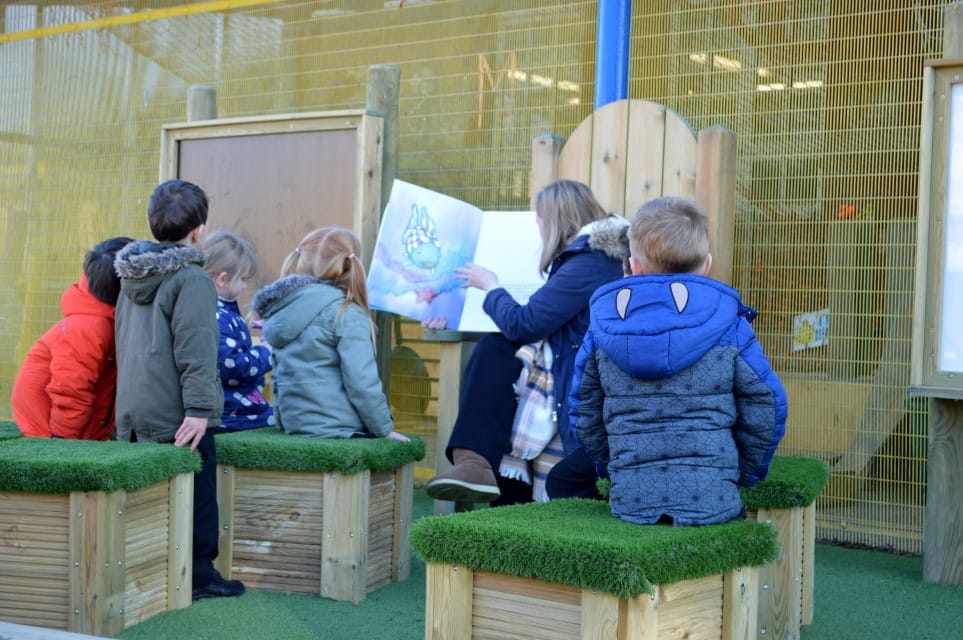
Activities To Stimulate Children's Creativity
Cultivating creativity in the classroom and playground is essential for children's development, especially in the early years. By placing imaginative and creative playground equipment and classroom furniture around, you will always give your pupils a chance to be creative.
Here are three activities that could help boost children’s imagination and creativity levels.
Creative Writing And Storytelling
Encourage children to write stories or poems based on prompts or the children’s imagination. This activity allows children to express themselves and explore different narratives and characters.
A lovely resource to use would be Pentagon Plays Giant Playhouse, complete with a chalkboard and benches and crafted with a double-pitched roof and half-height walls on two sides. This is the ideal space for children to let their imaginations run wild through storytelling and pretend play.
Children can turn the Playhouse into a vet surgery, café, supermarket, or a cottage in an enchanted forest and let their creative juices flow as they engage in pretend play, which will help develop their social skills.
The children can use the chalkboard to mark make, write down their stories and story map, as well as write down menus, recipes, price lists, etc. making their pretend play more engaging and believable.
Product Spotlight
The half-heigh walls on two sides provide the perfect performance stage for a puppet show or as part of a vet surgery, shop, or café. The Giant Playhouse is a very versatile resource for any school playground, encouraging child development through pretend play with social interaction skills through children’s imagination and creativity!
Art Projects
Artistic activities like drawing, painting, or crafting can be very effective. For instance, you could have students create art from recycled materials, which teaches them to see new uses for everyday objects.
A great way to utilise art during your lessons could be by combining it with guided reading. Try getting your children to draw something just from your verbal description. Not only does this start to incorporate imaginative play, but it helps develop communication skills by the children asking questions to get more details.
Pentagon Essentials Range – Group Art Easel is a lovely resource to encourage children’s imagination and to share creative ideas, being 4-sided. Children can work together, individually, or in groups in a creative play area being creative by using paint, chalk, pens, and other materials enabling their creative thinking skills to soar!
The Group Art Easel can also be used during pretend play sessions, with children utilising the chalkboard to create lists, drawings and more! It's no surprise so many creative play areas and pretend play areas have our Group Art Easel contained within them.
Problem-Solving Games
Games that require creative thinking and problem-solving can stimulate children’s minds as well as lead to intellectual development. For example, you could use puzzles, building blocks, or even digital games that encourage design and strategy, develop basic investigative skills and cognitive skills whilst allowing students to keep engaged and have fun.
Pentagon Play’s Play Builder Engineer Set with Role Play Additions is a perfect resource for children to use to utilise basic problem solving skills, design and strategise as well as incorporating pretend play aspects.
It is great for large classes to enhance creativity and great ideas. The sheer amount of materials available enables the children to be creative, and inventive and enjoy low-level active play trails for themselves and their peers.
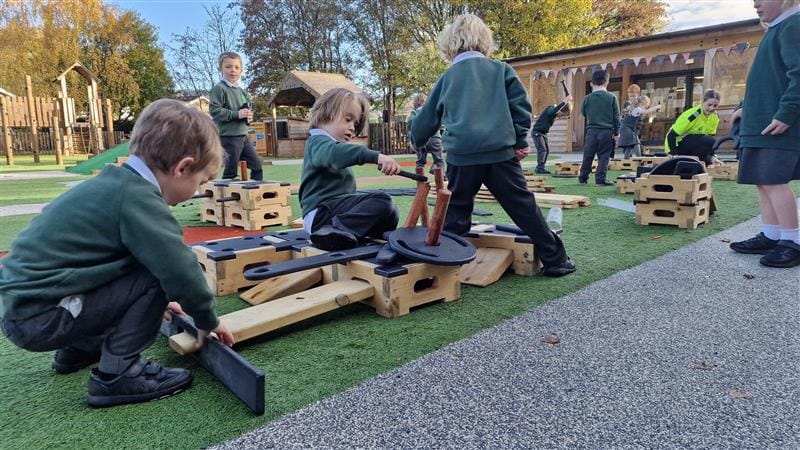
With 145 pieces in total including rectangle and square blocks, lids, tenon and button planks, and entry ramps, children can create exciting trails for them to cross. With the addition of the Role Play Additions, a child’s creativity can develop by building cars, airplanes, and trains which adds another dimension to their creative play and pretend play.
Pentagon Plays Play Builder Engineer Set with Role Play Additions provides the perfect resources to encourage children’s imagination through pretend play by immersing themselves into different worlds of imagination whilst at the same time working together using problem-solving skills to create and facilitate realistic role-play situations.
From building train tracks and a train to cross the Highlands of Scotland, to building a bridge over the Amazon River to find an old plane to escape from giant monkeys – children can have engage with pretend play, problem-solve, utilise risk taking and be creative all at the same time!
Develop Your Children's Creative Thinking Skills Today
We here at Pentagon Play hope that you see the importance of cultivating creativity and how creative play supports children's development in a wide variety of different areas. With so many different creative play methods, every child can find something fun to do.

Not only does the creative process help children's development, but it's also fun! Creative play can keep children engaged and excited to learn about new ideas and concepts.
Creative play can also be enjoyed by almost all abilities. From a mainstream EYFS class taking part in pretend play to a SEN early years foundation stage class utilising their artistic skills, this type of play can keep people engaged and keen to learn new and original ideas.
If you're struggling for ideas on how to introduce creative play to your pupils or you want more information and resources regarding the topic, then make sure you contact us today and we'll be more than happier to help.
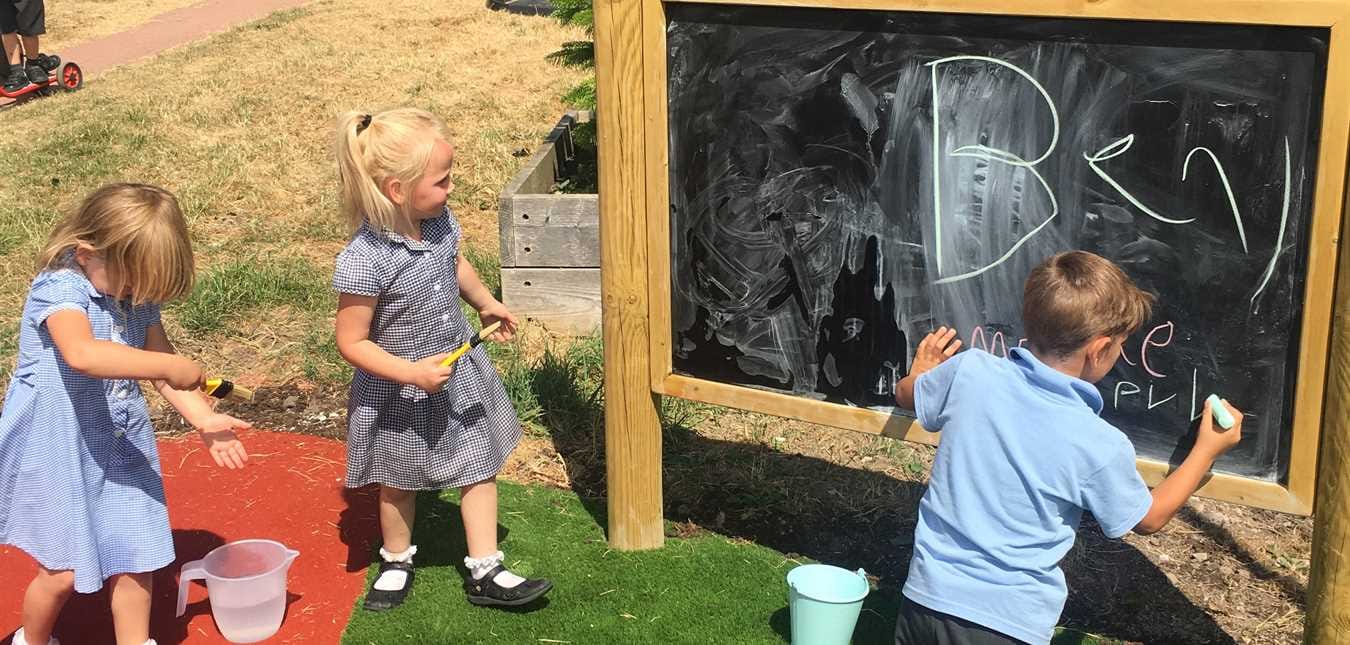

.JPG)


.JPG)


